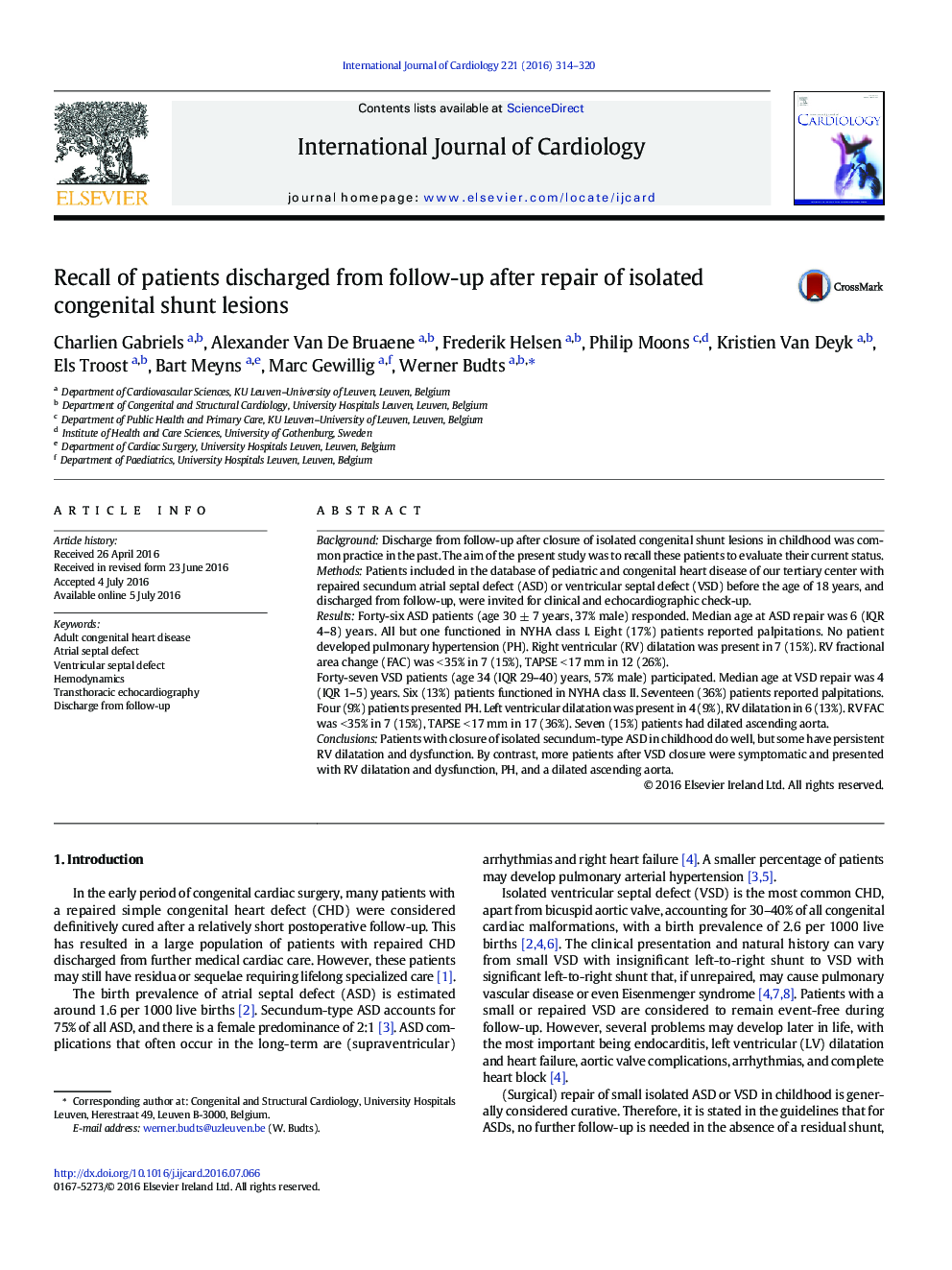| Article ID | Journal | Published Year | Pages | File Type |
|---|---|---|---|---|
| 5962960 | International Journal of Cardiology | 2016 | 7 Pages |
BackgroundDischarge from follow-up after closure of isolated congenital shunt lesions in childhood was common practice in the past. The aim of the present study was to recall these patients to evaluate their current status.MethodsPatients included in the database of pediatric and congenital heart disease of our tertiary center with repaired secundum atrial septal defect (ASD) or ventricular septal defect (VSD) before the age of 18 years, and discharged from follow-up, were invited for clinical and echocardiographic check-up.ResultsForty-six ASD patients (age 30 ± 7 years, 37% male) responded. Median age at ASD repair was 6 (IQR 4-8) years. All but one functioned in NYHA class I. Eight (17%) patients reported palpitations. No patient developed pulmonary hypertension (PH). Right ventricular (RV) dilatation was present in 7 (15%). RV fractional area change (FAC) was < 35% in 7 (15%), TAPSE < 17 mm in 12 (26%).Forty-seven VSD patients (age 34 (IQR 29-40) years, 57% male) participated. Median age at VSD repair was 4 (IQR 1-5) years. Six (13%) patients functioned in NYHA class II. Seventeen (36%) patients reported palpitations. Four (9%) patients presented PH. Left ventricular dilatation was present in 4 (9%), RV dilatation in 6 (13%). RV FAC was < 35% in 7 (15%), TAPSE < 17 mm in 17 (36%). Seven (15%) patients had dilated ascending aorta.ConclusionsPatients with closure of isolated secundum-type ASD in childhood do well, but some have persistent RV dilatation and dysfunction. By contrast, more patients after VSD closure were symptomatic and presented with RV dilatation and dysfunction, PH, and a dilated ascending aorta.
